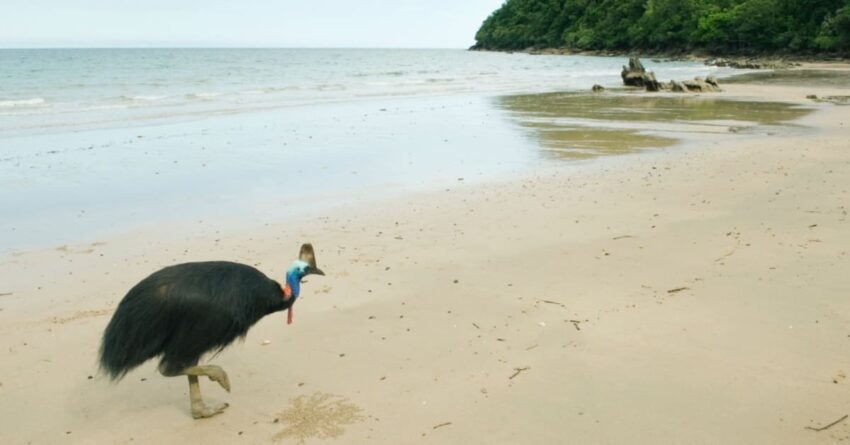Video Shows ‘World’s Most Dangerous Bird’ Emerging From Ocean

Guests at a beachside campground in Queensland, Australia witnessed a jaw-dropping sight last month when a southern cassowary was spotted swimming from the ocean to the shore. In addition to being the third-tallest and second-heaviest living bird, smaller only than the ostrich and emu, southern cassowary are considered to be the world’s most dangerous due to their sharp, “dagger-like” claws that can grow up to four inches long.
Initially, onlookers believed the creature to be a turtle or a shark until it swam closer to the shore, at which point Bingil Bay Campground host Nikita McDowell was alerted to the massive bird.
“It just floated to shore until it reached the level where its feet could touch the ground,” McDowell told Australian Broadcasting Corp. of the Oct. 31 sighting. “[You] can see in the video it was getting knocked around quite a bit by the waves.”
After emerging from the waves, McDowell says that the cassowary headed toward the rainforest, where it “regurgitated a lot of salt water” and “stood in the shade beneath a tree with its legs shaking for about half an hour.”
“I knew it was exhausted. I knew it wasn’t going to have the energy to attack me or anything,” she added in a statement to Australia’s Department of Environment and Science. “The advice I received from the local wildlife carers and Queensland Parks and Wildlife Service (QPWS) was to monitor it and it would move on when it was ready. I went to make a coffee and when I returned, it was gone.”
Queensland Parks and Wildlife Service wildlife officer Stephen Clough thanked McDowell for calling the agency, as the southern cassowary is listed as endangered under the Nature Conservation Act 1992. “[It’s] important that, sick, injured, or orphaned cassowaries are reported to QPWS,” explained Clough, who called the footage “astonishing.”
Although cassowaries can impose a dangerous, and possible deadly risk to humans and other animals when provoked or angered, according to the Library of Congress, they are not overly aggressive birds and attacks are rare. They can move fast on land as well as on water, able to run at speeds of over 30 miles per hour and jump seven feet into the air.
However, humans are more of a threat to cassowaries, as the biggest threats to their survival include loss of habitat, vehicle strikes, and domestic dog attacks.
Clough says that it’s unclear how long the cassowary was in the water or why it went for a swim. “Cassowaries can swim and will take to the water to cross from one side of a river to the other, or if they feel threatened by domestic dogs or another cassowary through a territorial dispute,” he added.
McDowell thinks it’s possible that the animal entered the ocean around nearby south Mission Beach and was subsequently caught by the current or riptide and swept around to Bingil Bay.


